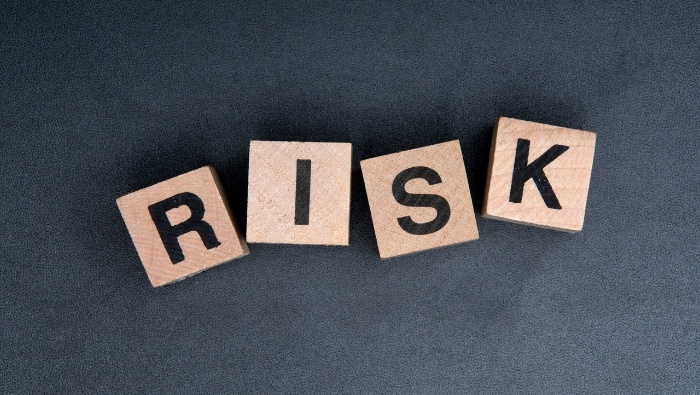How To Minimize 4 Risks to Your Retirement Savings
by Gary Foreman

There is no such thing as a completely risk free retirement account. Here’s what you need to know about four financial risks your retirement accounts face and how to combat each one so you can hopefully make your retirement dollars last as long as you do.
The other day I was listening to a call-in show on money. A gentleman called in concerned about his recently widowed mother-in-law. He explained that her husband handled the family investments and she had little knowledge about investing. She was in her 70s and the gentleman was concerned that she might be taking too much risk by being in the stock market. His main concern was that a market correction could significantly reduce her $200k portfolio.
As it turns out, I was in my car and didn’t hear the host’s response. But I did think about the call and how I would have responded to him.
Understanding Investment Risks
The man was right to be concerned about a market correction. It’s not a matter of if a correction will occur. It’s a matter of when it will occur. And, it wouldn’t be unusual if it wiped out 30% of the market in just a few days. So the fear of market risk does need to be considered.
But it’s not the only risk that Mother-in-Law faces. In fact, if she overreacts to market risk, she could put herself in an even riskier position.
Let’s take a few minutes to discuss four risks that our retirement savings face and how we can minimize each one.
The Reality of Inflation Risk
We’ll start with the risk of inflation. Up until the pandemic, prices had rose very little. One or two percent a year. But you may remember the late 70s when inflation was 10%+. And it has happened again.
Inflation is when there’s too many dollars in the economy and they change hands too quickly. Do you remember ‘quantitative easing’ during the last recession? That was a polite term for running the printing presses and creating dollars out of thin air.
COVID relief put trillions of dollars into the economy. Those extra dollars are seeds that trigger inflation. First we saw minor increase in prices. But many financial experts (myself included) expected inflation to become more serious. Now it is here.
Does inflation really matter to someone in their 70s? Yes, it does. According to mortality tables published by the Social Security Administration, a woman aged 70 today can expect to live to be 87.5 years old.
So it’s quite possible that Mother-in-Law could live another 20 years or more. If inflation runs just 4% per year, prices will double in 18 years. So that $4 loaf of bread will cost her $8. And the $3,500 monthly rent on an independent living apartment will cost $7,000! If either you or your spouse are likely to live 10 years or more, you shouldn’t ignore inflation risk.
You deserve a comfortable retirement.
How To Fight Inflation Risk
The key to fighting inflation risk is to have a portion of your investments that will go up in value as prices increase. Typically things like real estate, gold, silver and other precious metals.
Often the biggest inflation threat to retirees is in long term bonds. Planners usually advise that we increase the percentage of long bonds as we get older. Often they make up the majority of a retirement account.
The thought is that bonds are safe. And, unless the issuer goes bankrupt, you will get your initial investment back plus any interest that you have been promised.
But inflation can cut the purchasing power of your initial investment. And, when inflation runs high, you’ll never be able to sell the bonds prior to maturity for their face value. In the early 80s I had clients bring in bonds paying 4% or 5% interest wanting to sell. At the time inflation was running at a 10+% rate. Often those bonds were quoted at 60% of their face value! That’s devastating to someone’s retirement nest egg.
Fixed annuities are also at risk. You may be guaranteed X dollars per month for the rest of your life. Sounds good and safe. But each bit of inflation means that those dollars will buy less than they used to.
Cash can be a loser to inflation, too. Even at lower inflation rates, the dollar you put in savings last year doesn’t buy as much today as it did back then. Yes, you need readily available emergency funds. But don’t overdo it.
The lesson? Don’t be too heavy in long bonds and cash. Also, own something that will increase in value as prices increase.
The Subtlety of Interest Rate Risk
Over our lifetimes we’ve seen both very high and very low interest rates. Most of us grew up when passbook savings interest rates were in the low single digits. Then during the late 70s and early 80s we saw interest rates in the mid-teens.
Both overly low and overly high interest rates pose a risk for retirement savings. Especially when rates change dramatically.
First the low rates. If you have money in savings, CDs, money market funds or short term bonds, you know what it’s like to earn 1% on your money. It’s not just that your money doesn’t earn much, but you barely keep up with inflation, even when it is low.
High rates pose a different threat. Any long term investment (think bonds and bond funds) will lose value when rates rise.
Imagine that you own a bond maturing in 10 years that pays 4% interest. But rates today are 8% for a similar 10-year bond. You’d have two choices. You could sell the bond today at a significant loss or you could accept the lower interest rate and get your money back in 10 years when it’ll buy much less than it would today. Neither choice is a good one.
How To Fight Interest Rate Risk
The biggest risk is when rates change quickly. The most important thing you can do to protect yourself against interest rate risk is to keep a reasonable balance of investments in your retirement accounts. Typically, a change in interest rates will cause one type of investment to decrease in value, but will also cause a different type of investment to increase. For instance, if the economy slows and stock prices and interest rates go down, bond prices will increase.
Be most concerned with balance when rates are unusually low or high. We’ve had low rates for the last dozen years but that won’t last forever. So be prepared.
Will Debt Derail Your Retirement?
One of the most important ingredients for a comfortable retirement is to be debt free when you retire. This simple checklist can help you find out if debt could derail your retirement.
The Danger of Liquidity Risk
Liquidity is a term used to describe how accessible money is. Cash is very liquid. A 30-year bond is much less liquid. Your home is not very liquid at all.
You’ll often hear financial advisors recommend that we have three to six months of emergency savings that we can easily put our hands on. Those funds need to be liquid so that we can access them quickly. Generally, you’d use money market funds and CDs for your emergency fund.
There’s a cost to keeping money liquid. Typically, that money will earn low interest rates for you. The temptation is to have all of your money working hard for you. But if you need money for a sudden home repair, auto accident or medical emergency and your money is tied up, you’ll be the victim of liquidity risk.
How To Fight Liquidity Risk
Liquidity risk is easy to fight. Just keep a reasonable emergency fund that’s readily available. You can expect to get money invested in CDs or money market funds within a business day or two. Many choose to roll 1-year CDs. They can redeem them early for a small interest rate penalty if they need the money quickly. (See Setting Up a CD Ladder: The Pros, Cons and How-To.)
The Reality of Longevity Risk
Modern medicine is a wonderful thing. We all have friends and relatives that are still with us because of newer medical treatments, surgeries and medications. So we’re all living much longer. In fact, if a couple reaches age 65, there’s a 50/50 chance that at least one of them will live into their 90s!
Great as that is, it puts more pressure on your retirement savings. No one wants to run out of money in retirement. It’s one thing to depend on your retirement savings for five years. Quite another if you need it to last 25 or 30.
How To Fight Longevity Risk
Begin by saving enough. There’s no magic number for how much you need to save. In large part it depends on how much you can expect from Social Security and any private pensions you may have earned. Your savings (401k, IRA, general savings, etc.) will need to make up any shortfall to your expected after-retirement expenses.
Traditionally, financial planners have said that you can safely expect to take 4% from your invested assets each year. That would mean if you’ve saved $100k, you could expect to have $4k each year. So if you want an extra $12k each year, you’ll need $300k in retirement savings.
The Truth About Retirement Account Risks
For most of us, risk is a nasty word when it comes to our retirement accounts. And rightfully so. But the simple truth is that there is no such thing as a completely risk free retirement account. Every investment or savings vehicle carries one risk or another.
But the good news is that by carefully balancing your investments, you can use one risk to offset another risk. That’s the best way to keep your retirement accounts safe.
Reviewed June 2023
About the Author
Gary Foreman is the former owner and editor of the After50Finances.com website and newsletter. He's been featured in MSN Money, Yahoo Finance, Fox Business, The Nightly Business Report, US News Money, Credit.com and CreditCards.com.
Sign me up for a comfortable retirement!
Sign me up for a comfortable retirement!
Popular Articles
- Comparing Retirement Housing Options
- How We Retired With Almost No Savings
- How Retirees Can Live on a Tight Budget
- 9 Things You Need to Do Before You Retire
- What You Need to Know About Long Term Care Insurance Before You Retire
- You Didn’t Save Enough for Retirement and You’re 55+
- Could Debt Derail Your Retirement? A Checklist
- Your Emergency Fund In Retirement: A Comprehensive Guide
- Managing Your 401k In Your 50s


